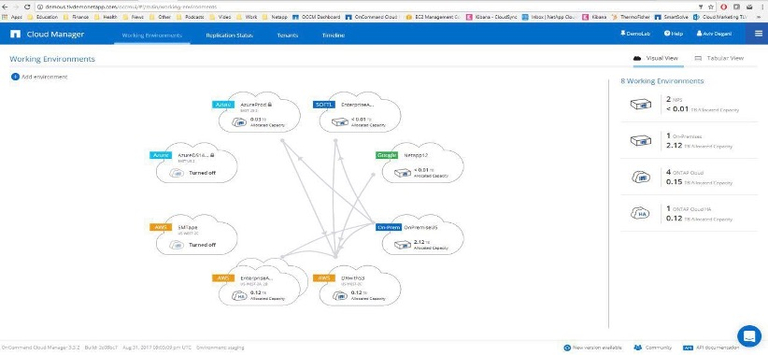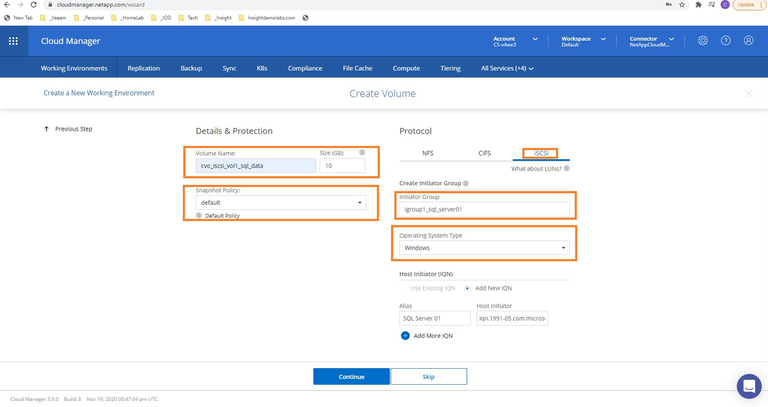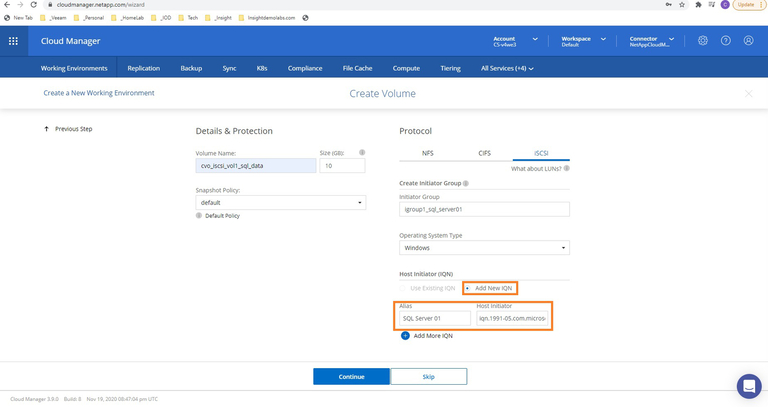More about Block Storage
- What Is Storage Caching? Benefits, Types, and Caching in the Cloud
- Gaining Block Storage Benefits in the Cloud with Cloud Volumes ONTAP: Customer Success Stories
- How to Provision Cloud Block Storage in Cloud Volumes ONTAP
- NetApp Block Storage With Cloud Volumes ONTAP
- Cloud Block Storage: Choosing the Best Option for You
- What Is Block Storage: Pros, Cons, and Comparisons
- Block Storage Provisioning With Cloud Manager
- Cloud SAN Storage with Cloud Volumes ONTAP
Subscribe to our blog
Thanks for subscribing to the blog.
January 7, 2021
Topics: Cloud Volumes ONTAPCloud Manager Cloud StorageAdvanced4 minute read12 minute read
NetApp Cloud Manager is the default management platform for Cloud Volumes ONTAP. It provides an enterprise-grade, single-pane-of-glass management platform for all your on-prem, hybrid, and multicloud storage provisioning needs (Day-1 requirements), including block storage, as well as the subsequent management needs (Day-2 operations) across NetApp cloud solutions portfolio.
Cloud Manager enables Day-1 operations such as provisioning new working environments: deploying connectors and Cloud Volumes ONTAP instances, on one or more public cloud platforms, both for file and cloud block storage volumes. It can also be used to discover on-premises ONTAP systems. It can then be leveraged to set up various Day-2 operations such as provisioning additional block and file storage volumes, hybrid and multi-cloud replication, enabling and configuring all NetApp cloud services such as Cloud Sync, Cloud Compliance, Cloud Backup Service, Cloud Tiering, etc., as well as for management cloud automation activities via the REST API for DevOps workloads.

As per one of the recent additions to the growing list of enterprise capabilities, Cloud Manager can now provision block storage volumes and iSCSI LUNS directly using the UI or via API calls for DevOps purposes.
In this article, we will show how to set up cloud block storage using NetApp Cloud Manager in three easy steps:
- Create a Cloud Block Storage Volume (iSCSI LUN)
- Mount the LUN to App Hosts / Virtual Machines
- Access Disk Drives
1. Create a Cloud Block Storage Volume (iSCSI LUN)
Similar to the file data volumes (NFS & SMB), NetApp Cloud Manager users can provision iSCSI volumes during the provisioning of Cloud Volumes ONTAP instances or as a follow-up Day-2 operation.
Let's take a look at how to provision a block iSCSI volume during the Cloud Volumes ONTAP provisioning process.

As illustrated in the screenshot above, users can select the iSCSI tab and provide a volume name, size, an appropriate snapshot policy (for data protection), an initiator group name along with the operating system type for compatibility purposes.
Note that during the iSCSI volume creation process, Cloud Manager will automatically create the LUN inside the volume for you which removes the need for the follow up LUN creation tasks manually. In addition, to simplify the management process, Cloud Manager will always deploy a 1:1 mapping between Cloud Volumes ONTAP volume and an iSCSI LUN.

Users can then map the volume and the LUN to the required VM running the applications with block storage access requirements. The full iSCSI initiator name of the VM needs to be specified here for security purposes as the volume’s access will be restricted to this host only. However, note that multiple hosts can be added to the same iSCSI block storage volume / LUN for multi-attach purposes for supported workloads such as Microsoft Failover Clustering. A LUN masking group in the form of an iSCSI initiator group is also created here or an existing initiator group can be used, as necessary.
Adding a new iSCSI volume to an existing Cloud Volume ONTAP instance as a Day-2 operation involves the exact same steps to maintain consistency.

2. Mount the LUN to App Hosts / Virtual Machines
Once the volume / LUN has been provisioned and associated with an appropriate set of application hosts / VMs, the LUN can then be mounted by the underlying operating system using the built-in iSCSI initiator utilities. For example, any Microsoft Windows Server operating system deployed inside a cloud virtual machine can utilize the built-in Microsoft iSCSI initiator to connect to the Cloud Volumes ONTAP instance using the IP network and mount the provisioned iSCSI LUNs as local block drives so that the applications running within the operating system can access these drives as raw block storage devices.
Details on how to establish an iSCSI session with the target can be found here.
3. Access Disk Drives
Once the iSCSI session is established between the VM and the Cloud Volumes ONTAP target IP, the disk drives can be mounted to the operating system as a local drive and can be accessed by any application that requires block storage. On Windows operating systems connecting via the Microsoft iSCSI initiator service to Cloud Volumes ONTAP, the drives will be automatically mounted and presented to the operating system upon establishment of a valid iSCSI session.
Summary
NetApp block storage options have been a mainstay of enterprise IT for decades, and there are more ways to use them than ever.
Cloud Manager provides full enterprise cloud storage management capabilities in a single platform for enterprise customers. It provides a single pane of glass storage management across the entire NetApp Data Fabric, across major cloud platforms such as AWS, Azure, and Google Cloud, as well as customer’s on-premises data centers. Cloud Manager now provides a single solution that can perform Day-1 provisioning tasks of cloud block storage volumes as well as managing the subsequent Day-2 operations, providing enterprise customers with a single management and monitoring solution to use.
For more insight, read these success stories of enterprise users leveraging Cloud Volumes ONTAP for block storage workloads

